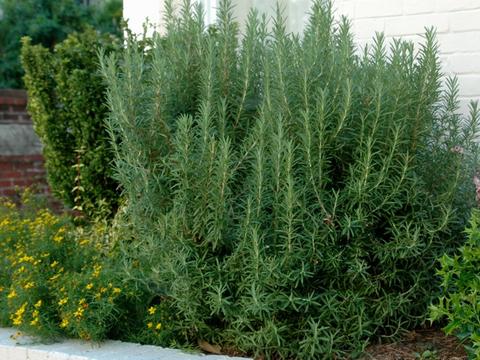Love me or leaf me
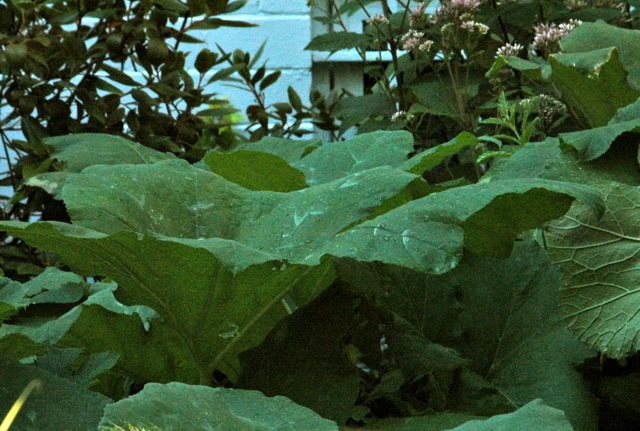
Surely it has not escaped any Georgetowner that we have just survived the hottest July on record. I am no authority in the science of climate change but it wouldn’t take a meteorological expert to convince me that the record highs, not to mention poor air quality, were theresult of the voluminous and toxic emissions of hot air emanating from both ends of Pennsylvania Avenue.
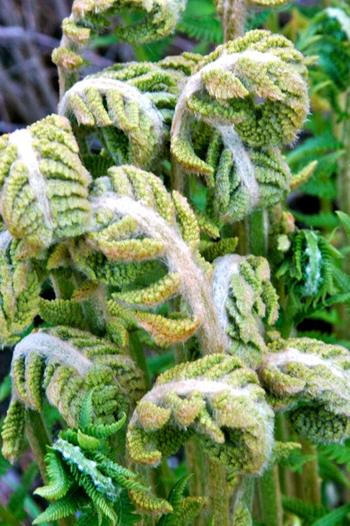
It’s also been dry. I was going to write a sequel to the drought-tolerant plant piece of several weeks ago, but really – just go water your pots, plants, and trees. Almost nothing is THIS drought tolerant and a few drops of rain now and then are not going to make a difference.
No, I would rather talk about leaves. This time of year, the most reliable and interesting feature of many gardens are imaginative combinations of leaves. As I was moseying around Georgetown looking for inspiration, I was consistently attracted to the textures, shapes, colors, and sizes of the foliage in various gardens.
Take, for instance, butter bur (Petasites hybridus). Butter burs grow in North America, Europe and Northern Asia, and have been used to alleviate migraine headaches, as diuretics, to soothe coughs, and to mitigate stress. I certainly don’t advocate resorting to butter bur for medicinal reasons. My interest is purely aesthetic. I associate its very large, broad light green leaves, which grow on 2-3 foot stems, with mass plantings along waterways. It was a great surprise, therefore, to find it growing in a small front garden nearby, alongside the native Joe Pye Weed (a great one for butterflies) and a fine leafed evergreen shrub. Its placement in this small space was intended, surely, to amuse, and it worked on me! It makes me think that butter burr would contrast beautifully with rhododendrons, tightly clipped boxwood, and grasses.
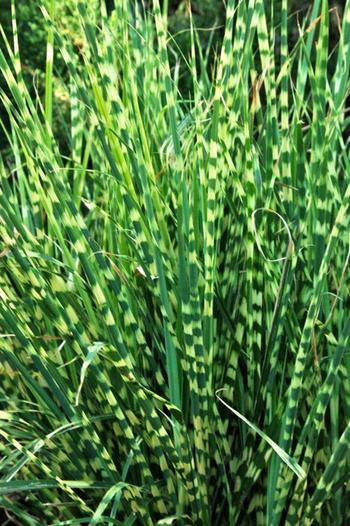
Speaking of grasses, Zebra grass, (Miscanthus sinensis 'Zebrinus'), is a terrific eye-catcher. Every time I see its4-6 foot tallnarrow leaves, horizontally marked by creamy-white bands, I am stopped in my tracks. In mass plantings it looks sensational, but it works equally well in small gardens as a focal point. A stunning contrast beside formal hedges, it’s also a good complement in borders featuring broad-leafed plants like great blue hostas and clumps of perennials like bee balm and white coneflower. Aside from its good looks, miscanthus tolerates light shade and isn’t fussy about soil.
In writing about leaves, I would be remiss not to rave about ferns. I adore ferns, from the time their tightly coiled fronds shoot up in spring to the time they die back in winter – or in the case of Christmas ferns, all year around. Ferns look great with everything, and fantastic in masses all on their own. One of my top three hundred and forty three ferns (I don’t play favorites) is the Japanese painted fern (Athyrium niponicum). I love their unusual colors, metallic grays tinted with magenta, and their soft ruffled texture is irresistible. They do well in shade to part shade but they don’t like drying out. Keep them moist in nice compost-rich soil, and combine them with red leafed plants, plants with pink or white flowers, and shrubs with dark green leaves. If you have shade and you don’t have ferns, you may want to rethink your planting priorities. Your shade needn’t be damp, since there are several species that tolerate dry soil. Know your garden’s conditions and find a fern that fits!

And then there is the way light plays on leaves. In winter, hollies and evergreen magnolias are wonderful because sunlight reflects off their leaves as though they were polished mirrors. Variegated aucuba (Aucuba japonica “Variegata”) also reflects light beautifully, and is most theatrical when planted in lightly shaded areas penetrated by gentle sunlight giving the soft yellow in the leaves the verisimilitude of sunlight at sunset. Plant Aucuba beside the soft, slightly blue-green leaves of nandina or the spikey leaves of Oregon grape, and you’ll get some great textural tension. Aucubas come in males and females, so you need both to generate gorgeous big red berries. They are adaptable shrubs that can grow in a wide variety of conditions and are known for their drought tolerance – but then I wasn’t going to mention that.

Several Georgetown gardeners proudly display herbs in their front gardens to great leafy effect. I know of several enormous rosemary bushes that bring out my most envious impulses. I adore their fine, silver gray texture and their tall upright structure. Wouldn’t you love a very sunny, well-drained garden lined with rosemary hedges? I also love the combination of sage and thyme. The contrast of these two compatible plants, one with pubescent soft, silvery (or burgundy colored) leaves and the other with tiny leaves lining semi-prostrate stems is immensely appealing. Aside from their leaf-ish attributes, of course, herbs offer scent, winter interest, and culinary possibilities that make one salivate.
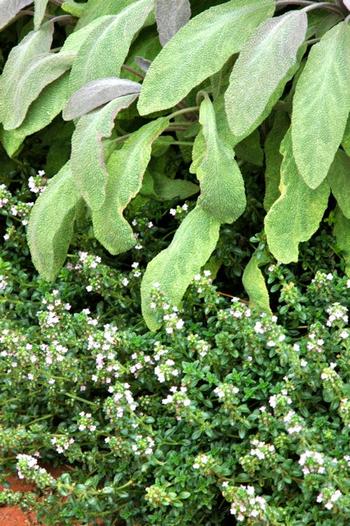
I have only skimmed the surface of the realm of leafy possibilities. There are trillions more to rave about but, even online, space is limited.
Just one more word, however, a designer’s caution: Plants with interesting foliage can add immense interest to your garden, but, poorly combined, they can have the opposite effect -- sort of like wearing plaid pants, a striped shirt, and a polka dot tie with trainers. If you plant too many things with a similar texture, you will have a boring garden; too many leaves with too much character and you will have a chaotic garden; too many fine-textured plants and you will have a fuzzy mess. Embrace drama, subtlety, balance, and whimsy, and you should be fine.
And the good news is that August should be more temperate for gardening, now Pennsylvania Avenue has been deserted.
